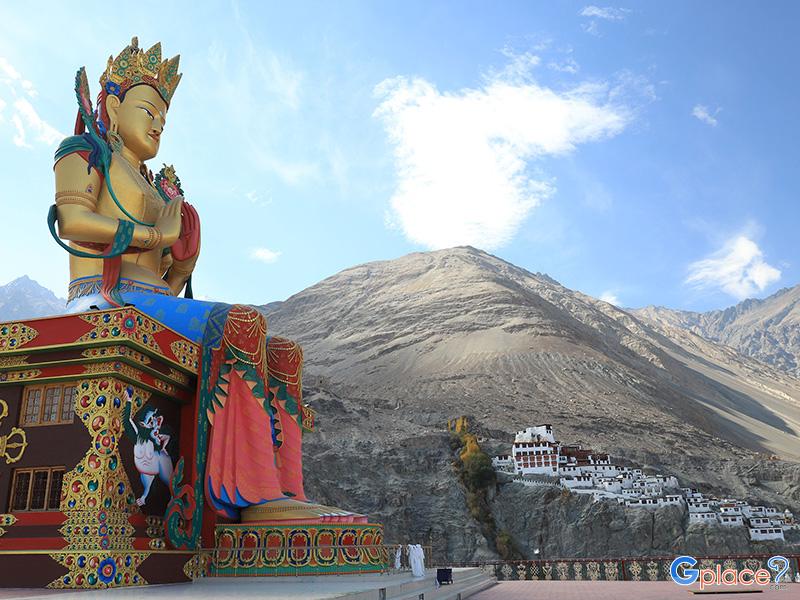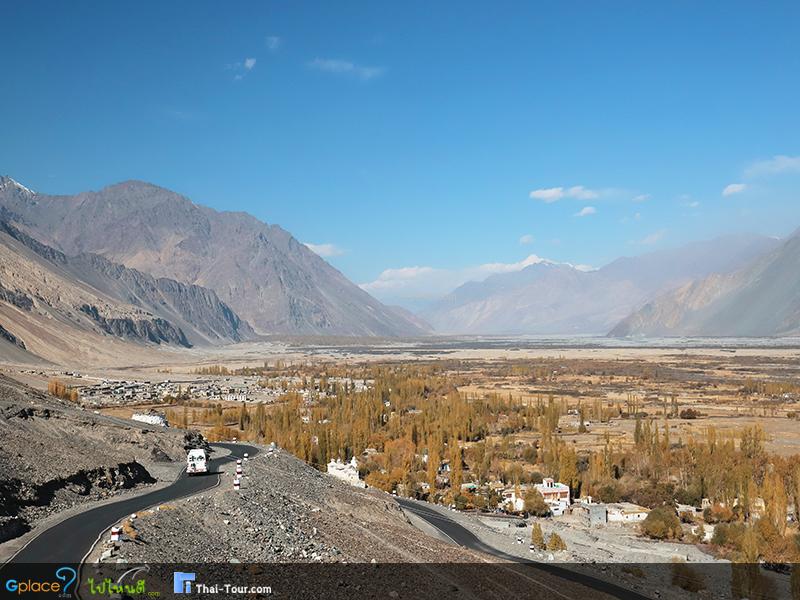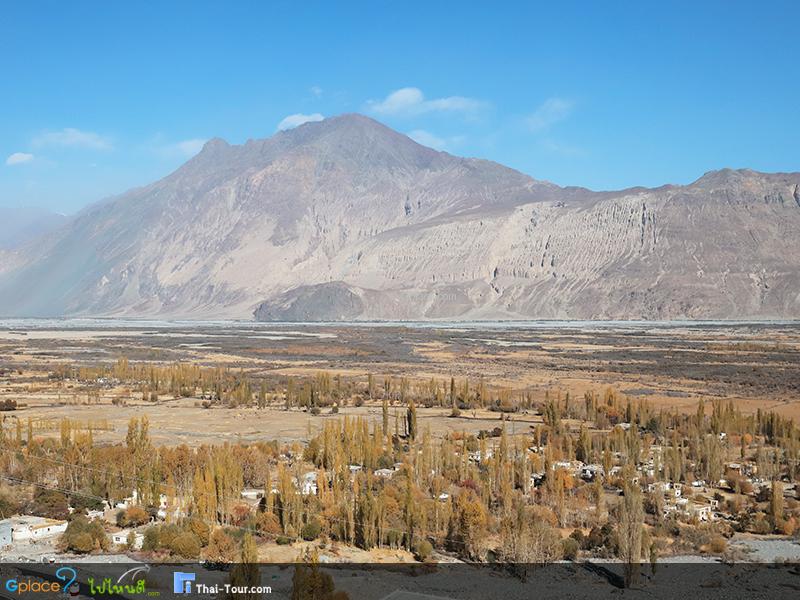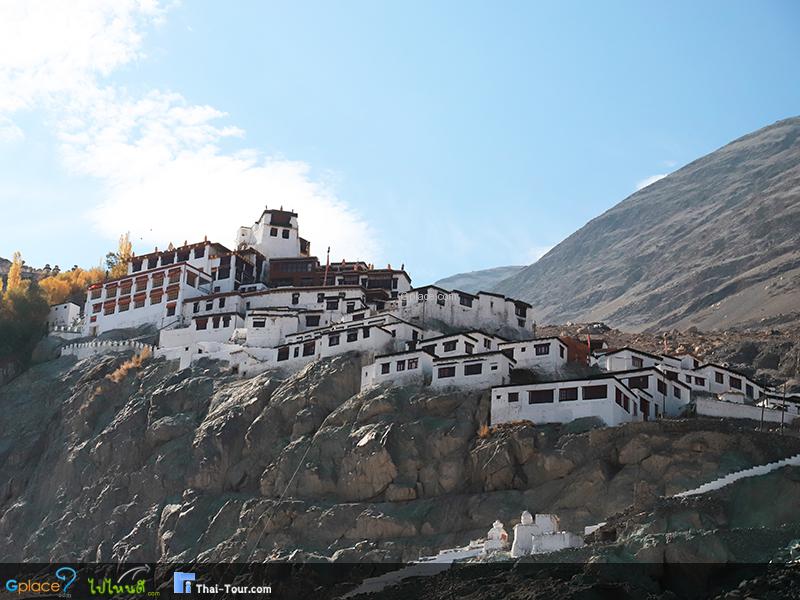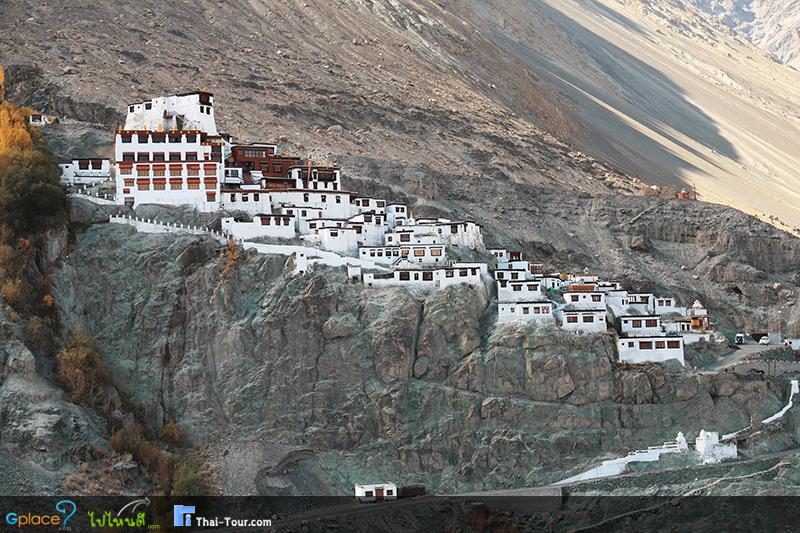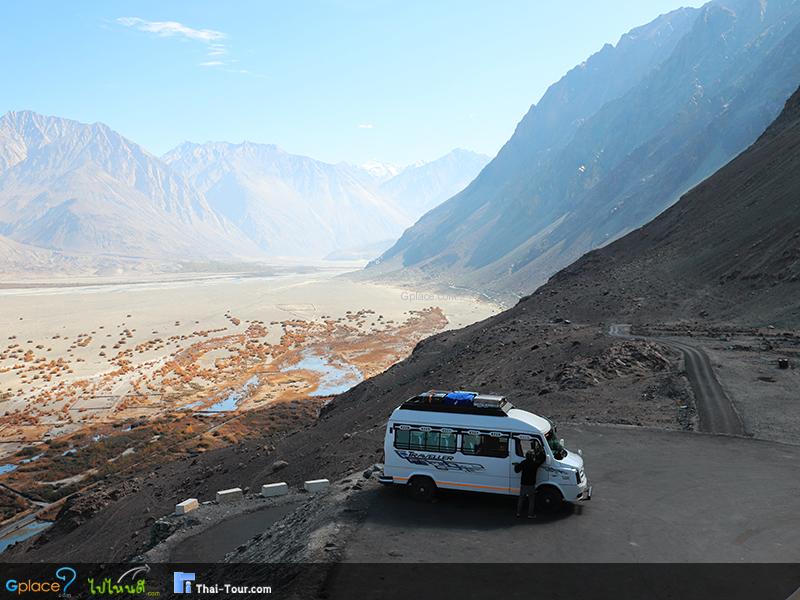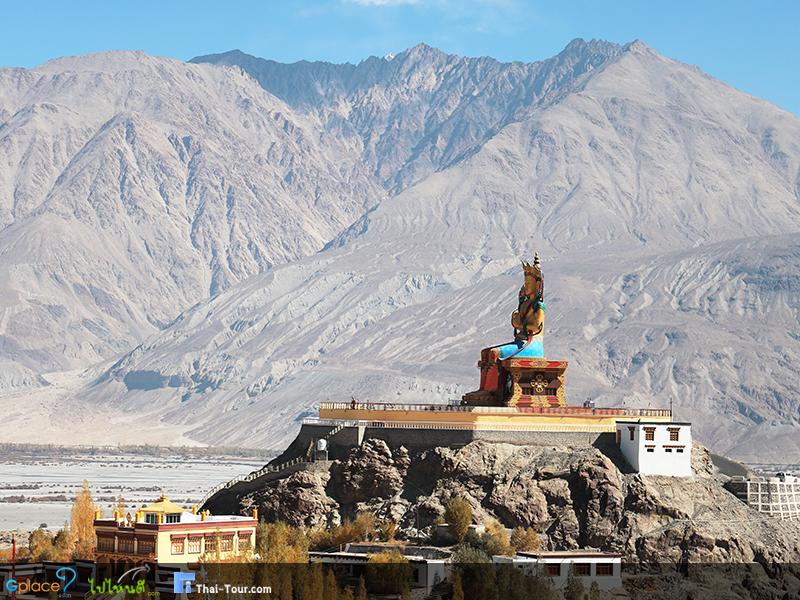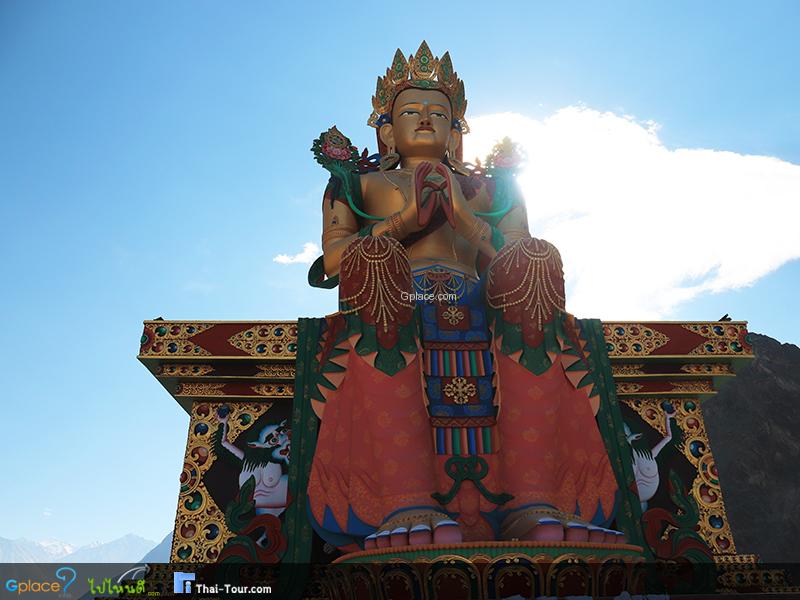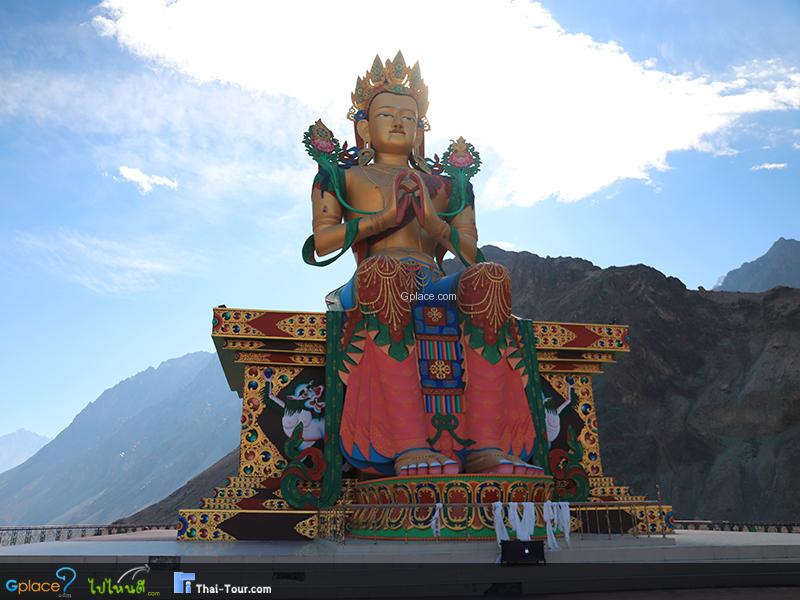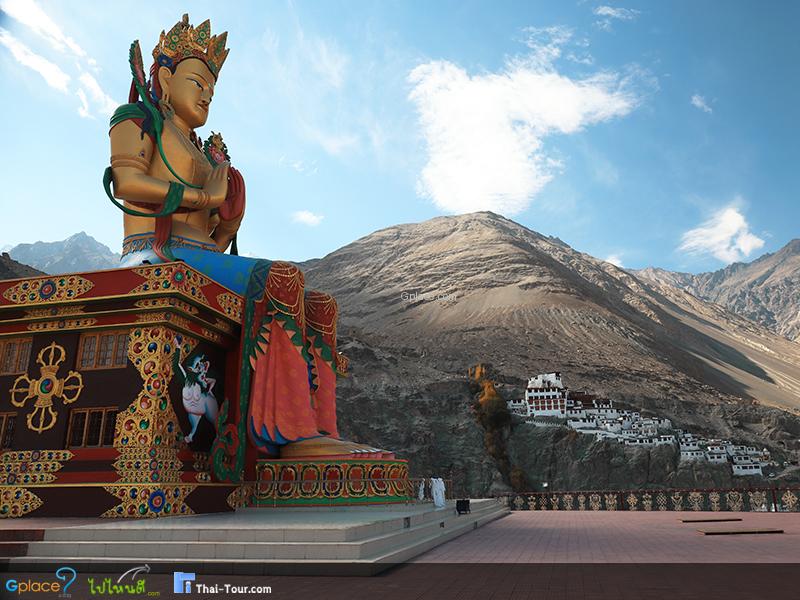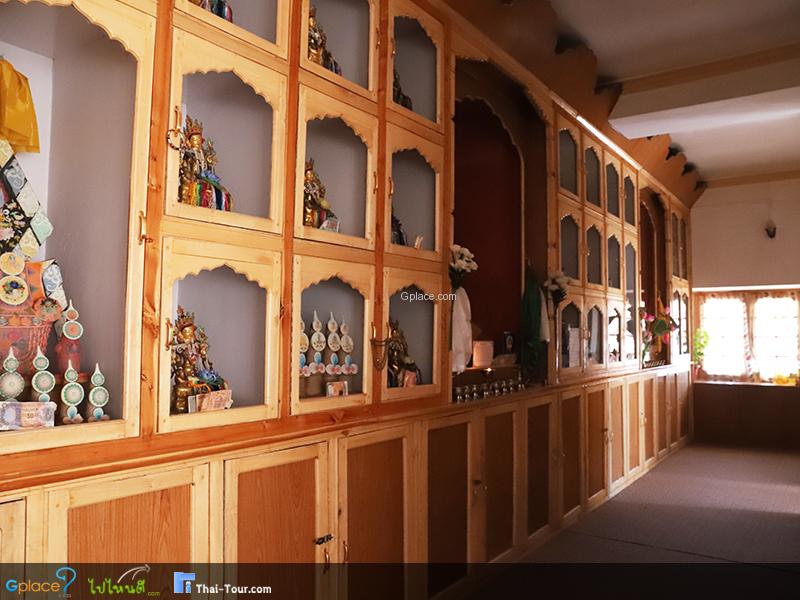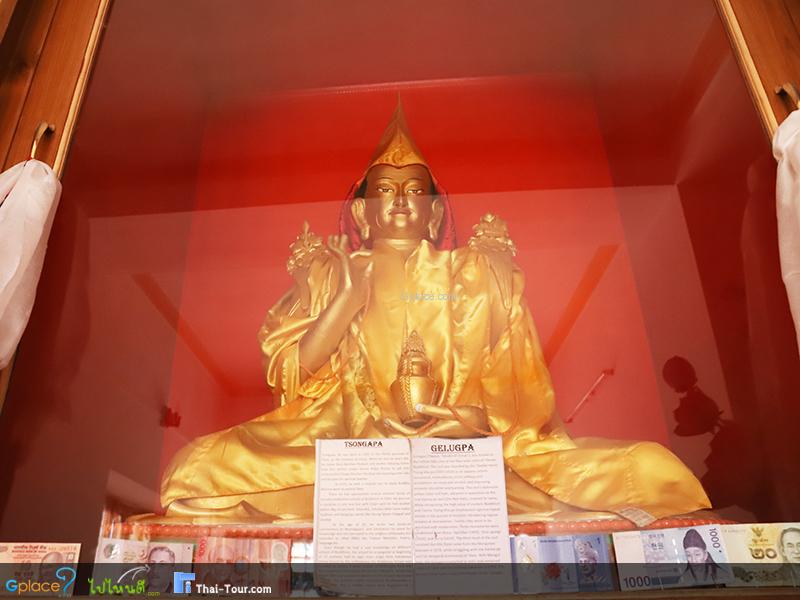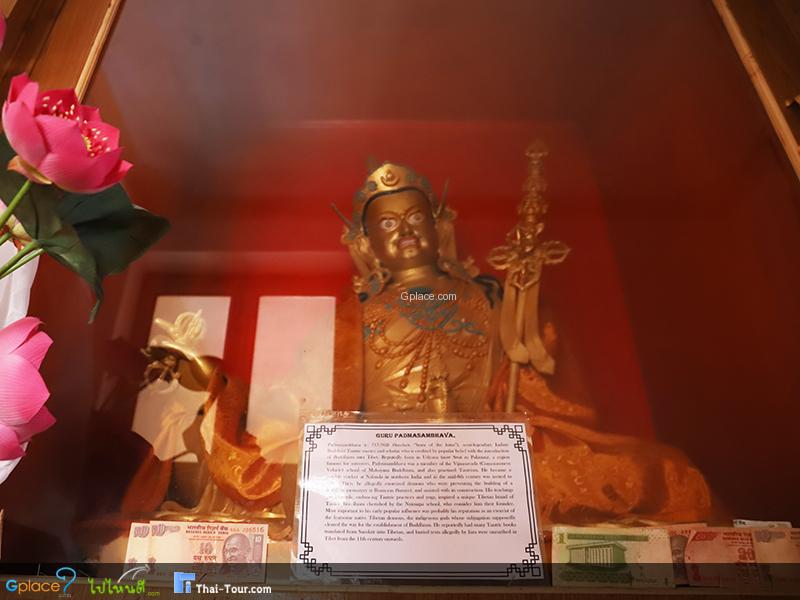“Perched at 3,144 meters in the Nubra Valley, Diskit Monastery is a spiritual center featuring an impressive Maitreya Buddha statue, stunning desert and river views, and a rich history as a crucial junction on ancient caravan routes. It is also home to the unique double-humped Bactrian camels.”
Diskit Monastery, also known as Diskit Gompa, is the oldest and largest Tibetan Buddhist monastery located in the Nubra Valley of Ladakh. This monastery holds immense significance for the Gelugpa (or "Yellow Hat") sect of Tibetan Buddhism, which is the most influential lineage in Tibet and Ladakh.
Rich History: Diskit Monastery was founded in the 14th century by Changzem Tserab Zangpo, a key disciple of Tsongkhapa, the revered founder of the Gelugpa school. It was established as a center for disseminating Buddhist teachings in the Nubra Valley and functions as a branch of the Thiksey Monastery. Over centuries, Diskit Monastery has continuously grown and evolved, becoming a vital repository of Buddhist knowledge and a significant meditation center in the region.
The monastery complex is divided into two main parts:
-
The Courtyard and Maitreya Buddha Statue Area: This is a newly constructed and expanded section, separate from the main temple building. It's built on a prominent hill, offering clear views of the surrounding landscape.
-
The Monastic Ritual (Sanghakam) Area and Main Temple Building: This part is situated on an adjacent hill. It houses the assembly hall, meditation chambers, and living quarters for the monks. The main temple features traditional Tibetan architecture, characterized by its pristine white walls and vibrant red roofs. Inside, you'll find ancient murals, Buddhist scriptures, and various Buddha statues.
The monastery itself stands at an altitude of 3,144 meters (10,315 feet) in the Nubra Valley, overlooking the plains of the Shyok River. The Nubra River, a tributary of the Shyok, flows parallel to the Indus River, located north of the Ladakh mountain range. The climatic conditions in this valley support lush vegetation, especially during favorable seasons, earning it the nickname "Garden of Ladakh." This valley was also part of the ancient Tibet-China caravan route, a crucial trade artery in the past, and is the native habitat of the unique double-humped Bactrian camels.
During the harsh winter months, when heavy snowfall blocks the roads, Diskit village and Diskit Monastery become a central gathering point and a vital refuge for long-distance travelers. Due to this role, the village is equipped with government offices and basic facilities to support both travelers and the local community.
Dosmoche Festival:
Held annually in February, the Dosmoche Festival (also known as the "Festival of the Scapegoat") is one of Ladakh’s most energetic and colorful spiritual events. During this festival, monks perform vibrant Cham mask dances to ward off evil spirits and bring blessings for the new year. It's a truly mesmerizing cultural experience.
360-Degree Viewpoints:
Diskit Monastery is renowned for its spectacular panoramic views from several vantage points:
-
The Base of the Maitreya Buddha Statue: This is one of the best viewpoints. From here, you can clearly see the expansive Nubra Valley, the meandering Shyok River, the unique Hunder Sand Dunes, and the surrounding snow-capped mountains. It's an excellent spot for capturing sunrises and sunsets.
-
The Balconies and Rooftop of the Main Monastery Building: If access is permitted, these areas offer different perspectives, but they still provide stunning views of the entire surrounding landscape, allowing you to appreciate the grandeur of the valley and the monastery's impressive structure perched on the hilltop.
How to Get There
-
From Leh: Diskit Monastery is located approximately 115 km (about a 5-hour drive) north of Leh. The journey requires driving over Khardung La Top (Khardung La Pass), one of the world's highest motorable roads, sitting at approximately 5,359 meters (17,582 feet).
-
Route: The typical route is Leh → Khardung La Pass → Khalsar → Diskit.
-
Road Conditions: Be prepared for winding, dusty roads, and in some sections, you might need to drive across small streams. An Inner Line Permit is required to enter the Nubra Valley.
Travel Tips
-
Acclimatization: Since Ladakh is at a significant altitude, it's highly recommended to acclimatize to the high altitude in Leh for at least 1-2 days before attempting the drive to Nubra Valley to prevent acute mountain sickness.
-
Khardung La Stop: Don't forget to stop at Khardung La Pass for a quick photo opportunity at the pass sign!
-
Dress Code: As it is a sacred site, please dress modestly and respectfully (shoulders and knees covered). You may need to remove your shoes before entering certain prayer halls.
-
Safety: Be mindful of your personal belongings and strictly adhere to the monastery's rules and regulations.
-
Tranquility: This is an important religious site; please maintain a calm demeanor and respect the peaceful atmosphere.
Best Season to Visit:
The best season to visit Diskit Monastery and the Nubra Valley is from May to September. During this period, the roads are generally open and clear of snow, and the valley is lush and fully accessible, making for pleasant travel conditions. From late October to May, heavy snowfall can occur, potentially leading to road closures and landslides.
Entry Fee:
- There is generally a small entry fee, typically around ₹30 - ₹50 per person, which often includes access to the monastery complex and the Maitreya Buddha statue area. It is advisable to check for the latest information on-site.
Opening Hours:
-
The monastery is generally open daily from 07:00 AM to 01:00 PM and from 02:00 PM to 07:00 PM.

















